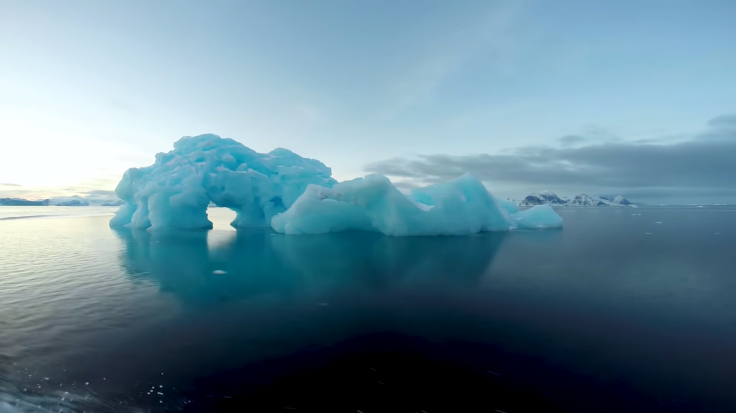Watch the first-ever video of a trillion ton iceberg that broke off Antarctica as it floats into the ocean
The iceberg continues to calve and disintegrate as it reaches warmer waters.
A trillion ton iceberg the size of Delaware, or four time the size of London, broke off the Antarctic ice shelf and fell into the sea last year. The British Antarctic Survey (BAS) has now released video footage of the Larsen C ice shelf and the iceberg, the A-68, floating in the ocean.
Roughly 6,000 square km in size, the iceberg is one of the largest recorded blocks of ice to ever float out into the sea. The A-68, when it broke off from the Larsen C, revealed an ocean hidden for hundreds of thousands of years under the shelf .
While those numbers can be hard to visualise and photographs are difficult to frame for reference and size, the video put out by the BAS shows exactly how impressive the iceberg is.
The iceberg is about 190 meters thick from below the sea to the top. Only 30 meters is visible above the ocean.
According to a release by the BAS, the ice shelf has been slowly floating into the ocean for some time now. Larsen A broke down in 1995, and Larsen B in 2002, while the Larsen C Ice Shelf broke away in July 2017 and produced an iceberg A-68 the size of Luxembourg.
Although the iceberg is massive, it was formed by a single crack along its parent ice shelf. The A-68 is reported to be a bit over 10% of the Larsen C ice shelf. BAS researchers flew around the iceberg to get a better view of it as it drifts into the Weddell sea.
In August 2017, BAS researchers found that A-68 had already moved by more than 5 km into the sea. The iceberg continues to break down and calve as it reaches warmer waters. Some of the "bergy bits" that break off are also quite large, measuring about 8 miles long.






















